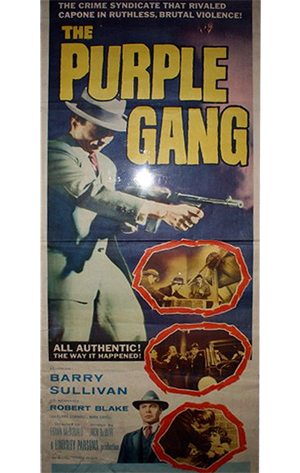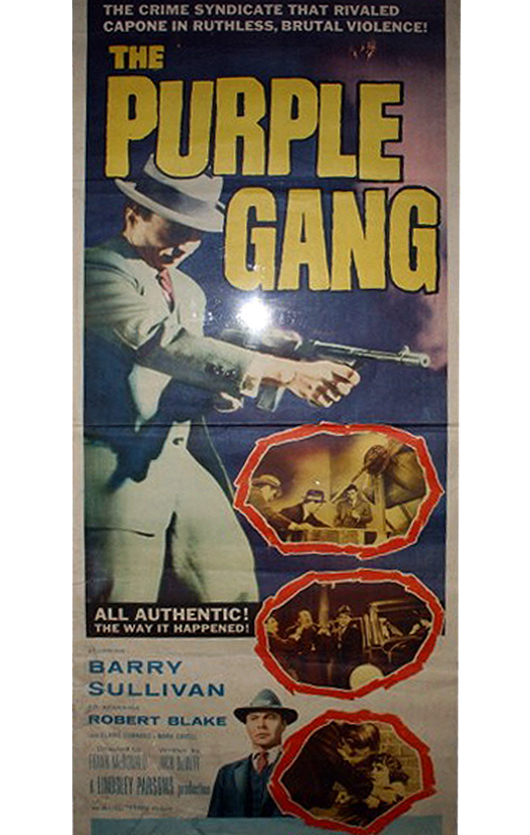
DETROIT (AP) – For every old tavern in Detroit, there’s a story. Or two stories. And they tend to be the same ones.
The joint was a speakeasy during Prohibition. That’s the first. No. 2, the Purple Gang drank there.
If the Purple Gangsters had really been that devoted to drinking in hidden nightclubs, they’d never have found the time to smuggle, hijack, extort, kidnap and murder—and they wouldn’t have become so legendary that every saloon claimed them.
So no, the story isn’t true. Not most of the time, anyway, and not to the satisfaction of actual researchers, according to The Detroit News.
At Tommy’s Detroit Bar & Grill, though, a few blocks up from the river on Third Street, the regulars can now say with academic certainty that they’re the proud descendants of illicit drinkers from the golden age of bootlegging. And there might well be a Purple Gang pedigree, too.
A team from Wayne State University and Preservation Detroit spent the summer exploring inside, outside and beneath the 144-year-old tavern. It found, among other things, a hidden staircase, a barrel full of butchered pig bones, shards of pottery and a rust-encrusted 70-year-old wrench.
“Garbage,” summarizes Ph.D. candidate Brenna Moloney of Ann Arbor, Mich. “But interesting garbage”—and useful keys to unlocking the continuing mystery of who we are, how we got here, and why anyone would put nice wood paneling in a basement room no law-abiding customer would ever need to see.
In other recent incarnations, the bar was known as the Golden Galleon and Mac’s on Third.
Tom Burelle, 53, bought it two years ago, “and I was curious. Who’s been here? What happened here? Was anybody shot here?”
That last was not just idle speculation. Vague legend referenced a corpse hidden on the premises. The team led by Wayne State associate archaeology professor Krysta Ryzewski found an odd pile of dirt, hemmed in by three brick walls in the basement, but figures at this point that it came from constructing the hidden staircase up to what’s now the small patio in front of the brick saloon.
She has seen the ornate business card with the name “Little Harry” that admitted carriers to what was almost certainly a speakeasy on the premises, probably a smallish social club.
That may or may not be a relation to the famous Little Harry’s on Jefferson that singer Anita Baker and her then-husband bulldozed to build an IHOP. But the building on Third was owned at various points during Prohibition by Harry Weitzman, who later built the Grande Ballroom and like the Purples was a Jew with roots in Eastern Europe.
It was owned at other points by Louis Gianetti, and the Purples were known to do business with Sicilians.
“We haven’t found the smoking gun of the Purple Gang,” Ryzewski says. As she points out, “They were criminals. They didn’t keep a lot of records.”
But that’s all part of the challenge, and the fun.
Archaeologists figure every day in the field leads to a week in the lab.
Ryzewski and Moloney put away their shovels recently, but expect to be digging through records until December, when they time the release of their findings to the 80th anniversary of the end of Prohibition.
“These are cultural resources,” Ryzewski says. “They’re nonrenewable. If we don’t study them now, we’ll lose them forever.”
A customer told Burelle that as a 10-year-old, he’d explored a passageway to a secret room with his dad, a plumbing contractor. Moloney is inclined to chalk that up to a child’s imagination and imperfect memory, but Burelle still likes the notion of a thriving nightclub tucked beneath the street.
“We’re here to establish what’s fact and what’s not,” Moloney says.
Part of the basement had its own electrical wiring: That’s a fact, and a curiosity. The bricks that clearly come from different eras are a fact, too.
What about the tunnel from the nearby Fort Street Presbyterian Church that appears to lead to the back of the tavern? Was that for thirsty ministers or the Underground Railroad?
“A project for another time,” Ryzewski says.
Surroundings change, but curiosity lasts forever.
___
Information from: The Detroit News, http://detnews.com
Copyright 2013 Associated Press. All rights reserved. This material may not be published, broadcast, rewritten, or redistributed.
ADDITIONAL IMAGE OF NOTE


